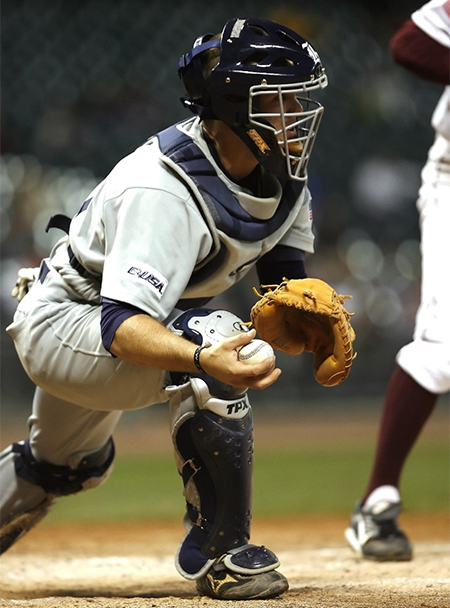I grew up on baseball. When I was young I quickly realized that there was one position on the field that was noticeably different from the others. Most of the fielders faced a certain direction, had similar gloves, and the same basic uniforms. But the catcher had on pads, a facemask, faced the opposite direction, and had a mitt that was vastly different from the other players. I was told that this was for the player’s protection. You see, while all the other players only dealt with the intermittent grounder, fly ball, or throw, the catcher was bombarded by high energy pitches every play.
Now consider the eye. The light sensitive layer of the eye is the retina. The area of greater focus on the retina is the macula and the dead center of the macula is the fovea, which has greatest focus on the foveola. This area is comprised of the light sensitive cone cells. There are three basic types of cones. One type is sensitive to blue, one to green, and the last to red. The chemical responsible for blue is called cyanolabe, the chemical responsible for green is chlorolabe, and the chemical responsible for red is erythrolabe.
 |
This brings me to the need for protection from HEV (High-energy visible light) radiation which is in the violet range to the blue range of the visual light spectrum (400nm to 450nm). Human eyes are well suited to respond to the vast majority of the visual radiation spectrum, but the 2% to 4% of blue receptors are not enough to handle the barrage of damaging blue light radiation that we receive from solar radiation and from our digital devices.
Now, back to the baseball example! If we correlate the cones that have cyanolabe to the gloves on a baseball field, they would be the catcher’s mitts. The green and red cones would correlate to the fielder’s gloves that handle the lower energies of grounders and fly balls. No one should ever think of a catcher using a fielder's glove to catch 100 mile an hour fastballs. It wouldn’t be long before a hand would be broken! Likewise, don’t let your client’s eyes take the higher energies that are damaging. ANSI Blue light hazard standards give light in the 430nm range as 100% damaging, and it is cumulative and permanent.
I hope this analogy can help you to recognize the importance of recommending proper coatings and tints. It's extremely important to ask lifestyle questions from your clients in order to satisfy this need. So, remember the catcher’s mitt the next time you pitch coatings to your clientele!












